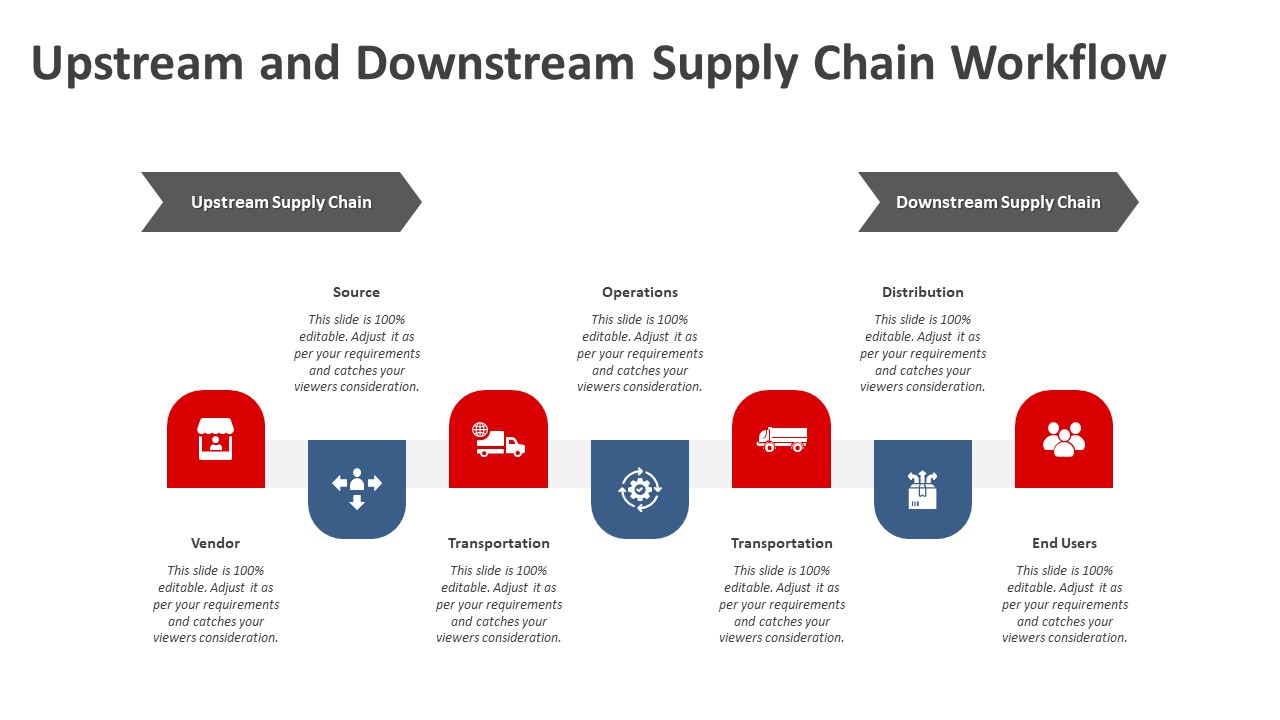Der Begriff Upstream beschreibt den Weg vom Rohmaterial zum fertigen Produkt, also den Produktionszyklus und somit alle Aktivitäten im Zusammenhang mit den Lieferanten, die Rohstoffe für den Hersteller beschaffen. Der Begriff Downstream hingegen bezieht sich auf die Aktivitäten nach der Herstellung. Explore the key differences between upstream and downstream processes in supply chain management, focusing on their roles, functions, and impacts on production. Upstream supply chain is the process of getting materials to the manufacturer, while downstream supply chain is the process of getting products from the manufacturer to the end consumer. While these two halves of the supply chain work very differently, they do affect each other.
Upstream supply chain is the process of getting materials to the manufacturer, while downstream supply chain is the process of getting products from the manufacturer to the end consumer. While these two halves of the supply chain work very differently, they do affect each other. Effective procurement bridges the gap between upstream and downstream activities. In the upstream phase, procurement teams focus on securing cost-effective and sustainable raw materials. Meanwhile, during the downstream phase, procurement ensures that finished goods are delivered to the right place at the right time, minimizing ... To effectively manage the supply chain’s complexities, many companies divide it into two significant parts: the upstream and the downstream. This division allows for a more focused and targeted approach to managing different aspects of the supply chain process. Explore the essential distinctions and connections between upstream and downstream supply chain activities. Learn how leveraging technology, optimizing processes, and fostering collaboration can help enhance efficiency, resilience, and customer satisfaction. Upstream supply chain operations encompass supplier management, procurement and transportation and ensure a reliable supply of input materials. Downstream supply chain involves order management, warehousing and transportation and timely product delivery and customer satisfaction.
To effectively manage the supply chain’s complexities, many companies divide it into two significant parts: the upstream and the downstream. This division allows for a more focused and targeted approach to managing different aspects of the supply chain process. Explore the essential distinctions and connections between upstream and downstream supply chain activities. Learn how leveraging technology, optimizing processes, and fostering collaboration can help enhance efficiency, resilience, and customer satisfaction. Upstream supply chain operations encompass supplier management, procurement and transportation and ensure a reliable supply of input materials. Downstream supply chain involves order management, warehousing and transportation and timely product delivery and customer satisfaction. Understanding the difference between upstream and downstream supply chains helps businesses run more smoothly. Upstream deals with sourcing raw materials, while downstream focuses on delivering finished products to customers. Both are equally important for keeping supply chains efficient.
Tony Duran Indiana Obituary June 2022
